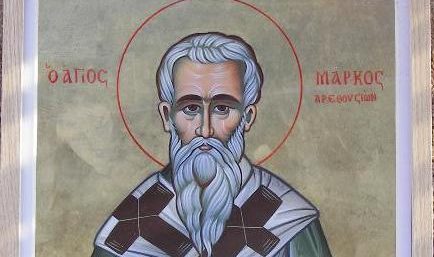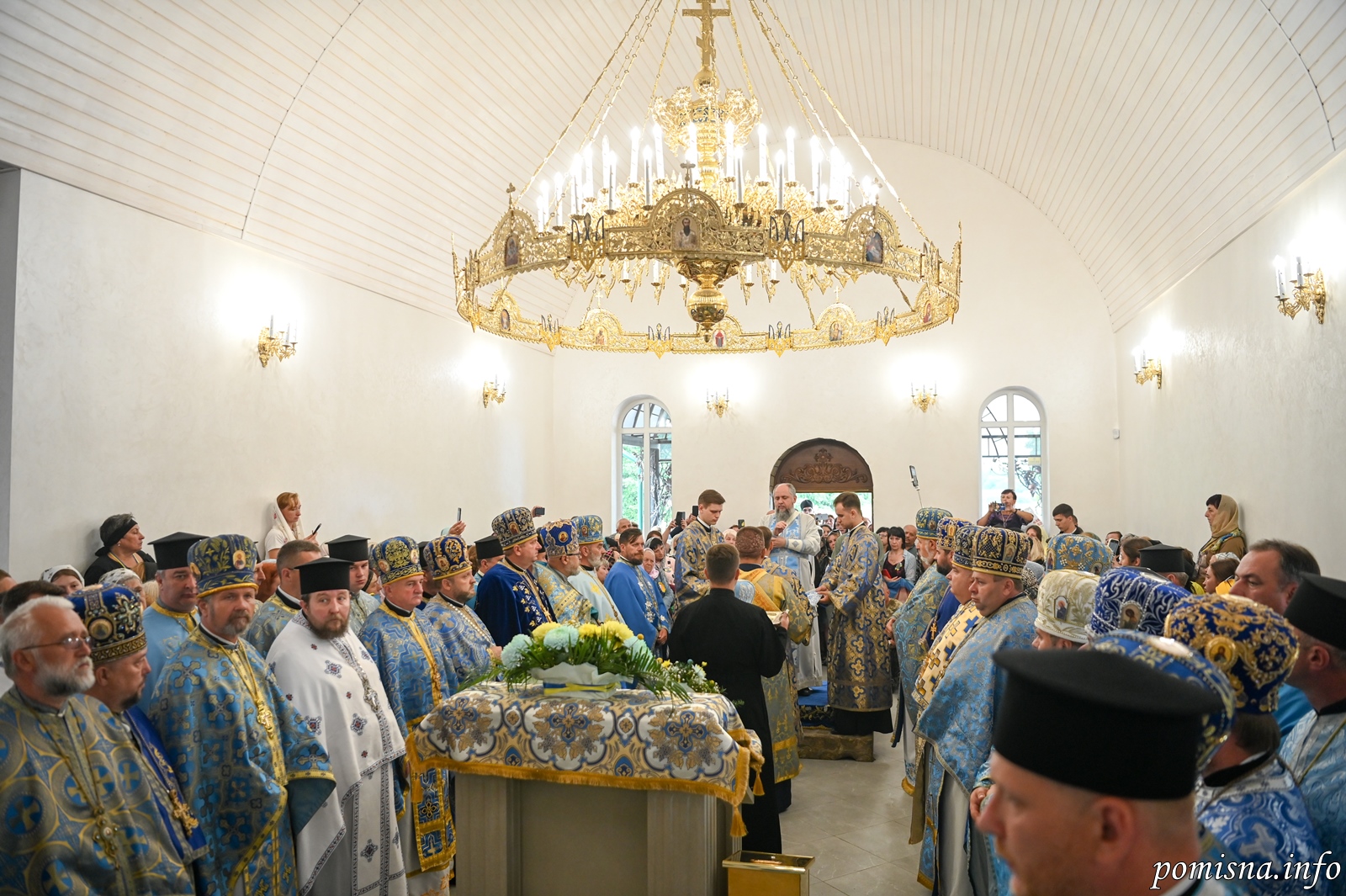Saint Mark, Bishop of Arethusa (29 March)


Saint Mark was Bishop of Arethusa in Syria. In the days of Saint Constantine the Great, Saint Mark, moved with divine zeal, destroyed a temple of the idols and raised up a church in its stead. When Julian the Apostate reigned, in 361, as the pagans were now able to avenge the destruction of their temple, Saint Mark, giving way to wrath, hid himself; but when he saw that others were being taken on his account, he gave himself up.
Having no regard to his old age, they stripped him and beat his whole body, cast him into filthy sewers, and pulling him out, had children prick him with their iron writing-pens. Then they put him into a basket, smeared him with honey and a kind of relish of pickled fish, and hung him up under the burning sun to be devoured by bees and wasps. But because he bore this so nobly, his enemies repented, and unloosed him.
We are told about Mark’s suffering by St. Gregory the Theologian and by Blessed Theodoretus. According to these reports, during Emperor Constantine’s reign, Mark destroyed a pagan temple and converted many to the Christian Faith. When Julian ascended the throne and shortly thereafter apostatized from the Faith of Christ, some citizens of Arethusa also denied Christ and reverted to paganism. Then they rose up against Mark because he had destroyed their temple, seeking that he either rebuild the temple or pay a large sum of money.
Since the aged Mark refused to do either of the two, he was flogged, mocked and dragged through the streets. After that they severed his ears with a fine but strong thread. They then stripped him, smeared him with honey, and left him tied to a tree in the heat of summer to be bitten by wasps, mosquitoes, and hornets. The martyr of Christ endured all without complaint. Mark was very old, but his countenance shone like an angel. The pagans reduced the price for their temple even more and finally sought from Mark an insignificant sum. This he could have easily given, but he refused to give even one coin for this purpose. His patience made an enormous impression on the citizens, gaining him their admiration and pity.
They then lowered the cost of the temple to practically nothing, in order to allow him to live. Finally they permitted him to go free, and one by one they all received instruction from him and returned to the Christian Faith. At the same time, in the city of Heliopolis at the foot of Mount Lebanon, the deacon Cyril suffered for a similar act. During the time when Christianity enjoyed freedom, Cyril destroyed some idols, and was later brutally tortured under Julian the Apostate. So embittered were the pagans against him that, when they killed him, they ripped him open with their teeth and tore out his entrails. The same day on which St. Cyril suffered, many others also suffered. The spiteful pagans carved their bodies into pieces, mixed them with barley and fed them to the swine. Punishment reached them swiftly: all of their teeth fell out and an unbearable stench came forth from their mouths.
Apolytikion of Hierormartyr Mark of Arethusa
Plagal of the Fourth Tone
Since they had slain through their abstinence and struggles the fiery ragings and fierce motions of the passions, the staunch Martyrs of Christ God laid hold on the graces to drive off the pains and illnesses of the sick and work wonders both while living and after death. Strange indeed is the miracle! That these bare bones should pour forth such overflowing streams of cures. Glory be to our only God.





